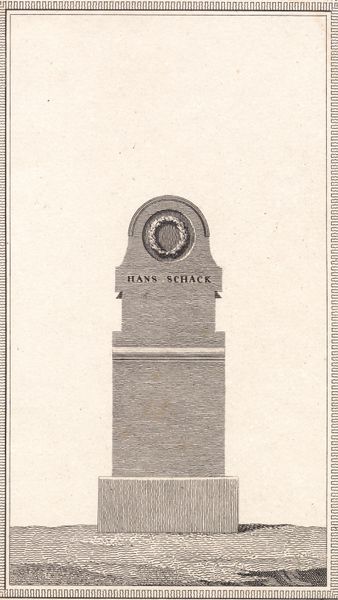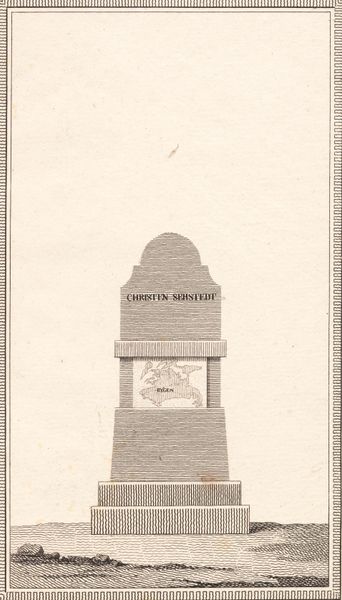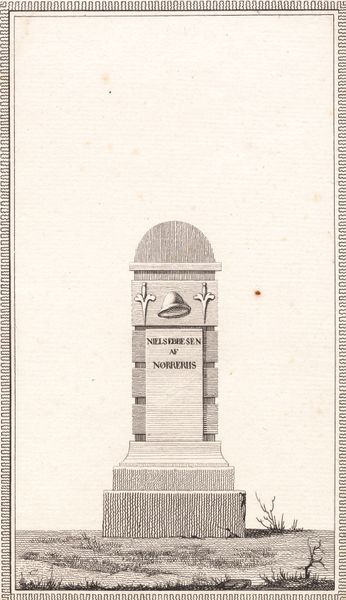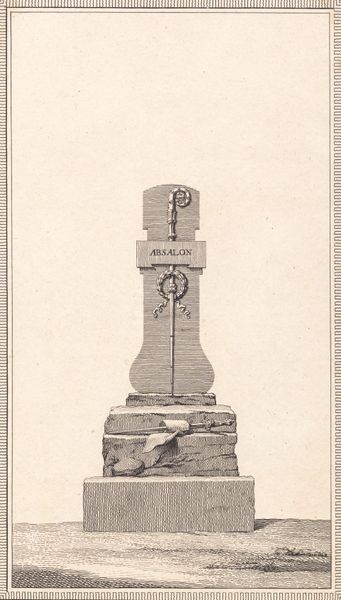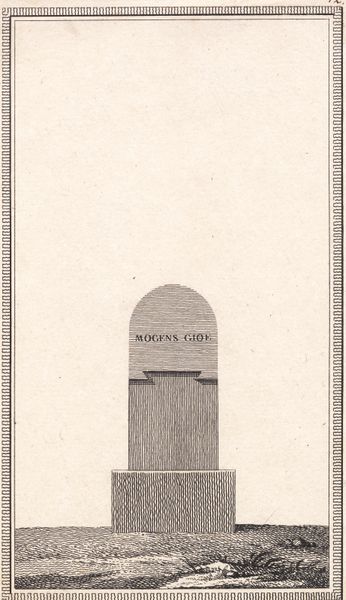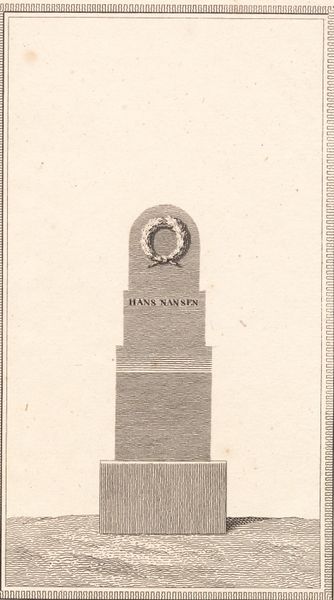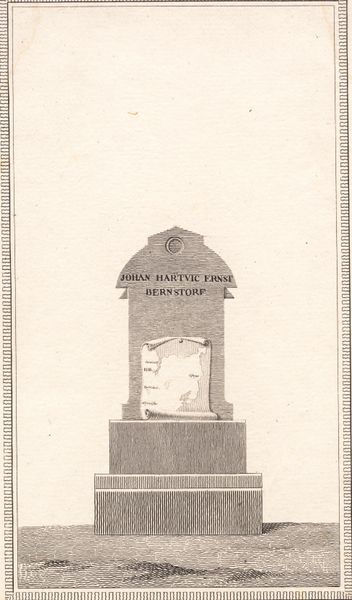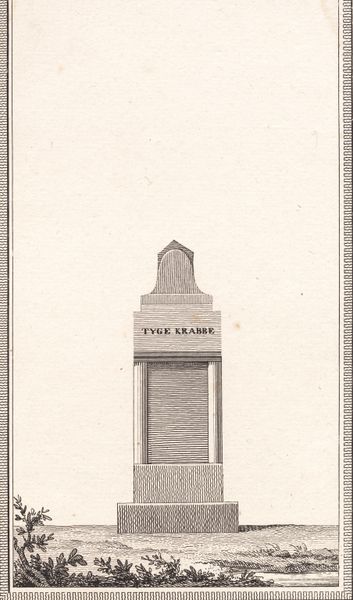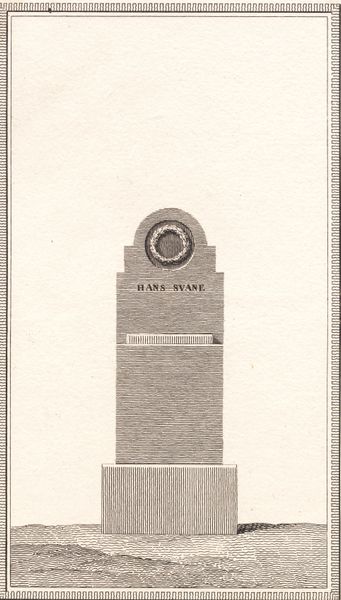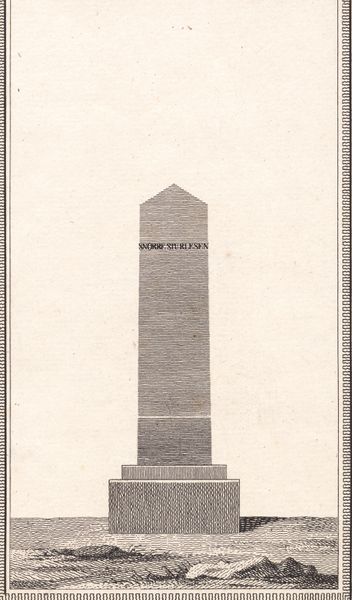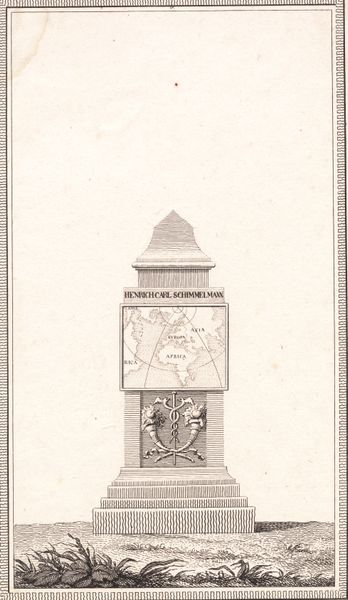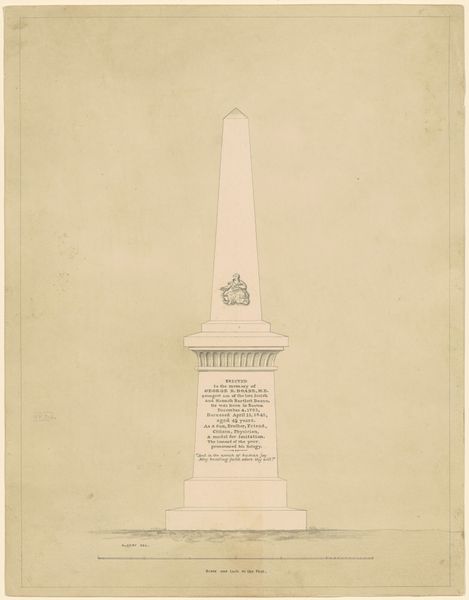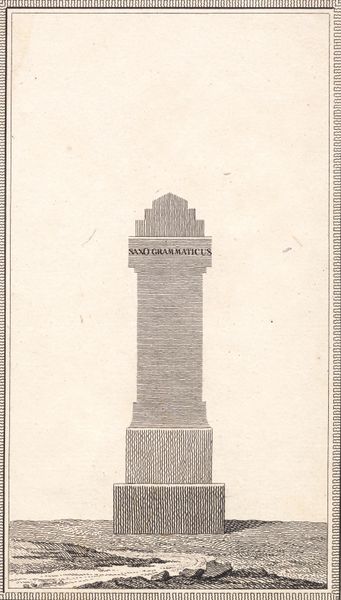
Dimensions: 178 mm (height) x 103 mm (width) (billedmaal)
Editor: This is "Johan Rantzau," an etching and engraving by J.F. Clemens, created between 1779 and 1781. The image depicts a stone monument in a stark landscape, almost like a memory. It's very...linear. What stands out to you? Curator: Linearity indeed defines its impact. Look at how Clemens employs it not just for depiction but for conveying ideas. This isn't just a stone, but a stele—an upright slab used, through the centuries, across diverse cultures, to commemorate an individual. Why do you think Clemens reduces Johan Rantzau to only a name? Editor: Perhaps to suggest his essence endures beyond life? It does create a sense of timelessness and grandeur despite its small scale. The barren landscape adds to that feeling. Curator: Precisely. The stele rises alone from a flat earth. Even the classical details--the triangular pediment, the layered base--contribute to the overall feeling of permanence and importance. What emotional tone do these symbolic details evoke? Editor: I think it's interesting how the frame itself mimics the architecture of the monument, solidifying the idea of remembrance... almost oppressive, maybe? Curator: Oppressive perhaps because we're facing our mortality reflected in Rantzau's monument. The symbols tap into our deepest cultural memories about death and remembrance. It speaks volumes by showing so little. I find it powerful how visual codes echo meanings. Editor: I hadn't considered the emotional weight behind the symbols. It really brings a new dimension to the work for me!
Comments
No comments
Be the first to comment and join the conversation on the ultimate creative platform.
